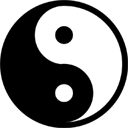 I Ching Online
I Ching Online 
Thank you for donations!
We stay ad-free
with your generous support.
 I Ching Online
I Ching Online 
Thank you for donations!
We stay ad-free
with your generous support.